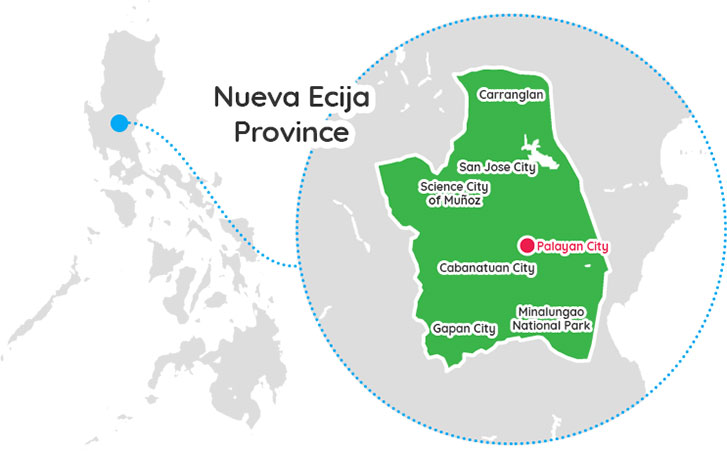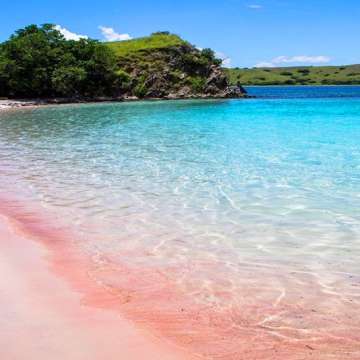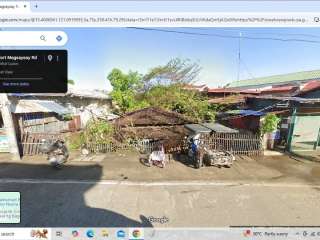About nueva ecija

Nueva Ecija, officially the Province of Nueva Ecija, is a landlocked province in the Philippines located in the Central Luzon region. Its capital is the city of Palayan, while Cabanatuan, its former capital, is the largest local government unit (LGU). Nueva Ecija borders, from the south clockwise, Bulacan, Pampanga, Tarlac, Pangasinan, Nueva Vizcaya and Aurora. The province is nationally known as the Rice Granary of the Philippines, producing the largest rice yield in the country.
The province was named after the old city of Ecija in Seville, Spain. In 1896, Nueva Ecija became one of the first provinces to revolt against Spanish rule, and one of the provinces which declared its independence in 1898.
Nueva Ecija is the largest province and the biggest rice producer of Central Luzon, thus, often referred to as the “Rice Bowl of the Philippines”.
History
These first settlers included tribes of Bugkalots or Italons, Abaca and Buquids.[6] Settlements were built along the banks following the river's undulations. The Ilongots, meaning people of the forest, were the fierce headhunters and animist tribes who occupied Carranglan and the mountainous terrain of Sierra Madre and Caraballo.[7] The head hunting communities were nestled along the riverbanks of Rio Grande's tributaries in the north. Abaca and Italon were subgroups of Bugkalot people, meaning river settlers. Ilongots survived mainly by fishing and hunting. Food production was a secondary occupation. The agriculture-based community of Caraclans and Buquids[8] were settled in Bongabon and Pantabangan along the riverbanks of Rio Grande's tributaries in the northeast.[9]
When the waves of Tagalog migrations took place between 300 and 200 B.C., intrepid travelers and traders set up settlements along Luzon's western coast. These early settlements formed the nucleus of the Pampango Empire that was consolidated by Balagtas. The flatlands of the southern portion of Upper Pampanga was a hospitable place for these new Tagalog settlers. The indigenous tribes were forced to take to the hills in the face of the Tagalogs' superior technology.[10]
Barter trade flourished among communities that settled along the great river. The constant riverside trading resulted in both a commercial and cultural exchange between the settlements in vast plains upstream of the Pampanga River. Settlements in Carranglan, Pantabangan, and Bongabon and prospered and grew into more stable communities.[citation needed]
At the time, the Pampango crown has waned and had little resistance from Spanish invasion. When the Pampango Empire fell into the hands of Spanish forces under the command of Martin de Goiti in 1572, the conquistadores began their long upward trek towards Cagayan Valley and Mountain Province. Their forces passed through the settlement areas of the Upper Pampanga River. They also attacked the Caboloan of Pangasinan, effectively capturing more territories from local kingdoms.
Because of growing territorial domain and evangelical missions, a command outpost or Commandancia in the Upper Pampanga River area was established. Then Governor-General[11] Fausto Cruzat y Góngora (July 25, 1690, to December 8, 1701) had most likely spent much of his time in the northern outpost in Carranglan and Pantabangan and, baking in the fiercely hot climate, probably waxed nostalgic about his hometown in Écija, Andalusia in Spain, which was also known as la sarten or the frying pan because of its intensely hot summers. Thus the Governor-General hit upon the notion to name the outpost Nueva Ecija. Both the New and Old Ecija were washed by navigable rivers- the former, by Pampanga River and the latter, by the river Genil.
Consistent with the history of Hispanization in the rest of Philippine archipelago, Nueva Ecija was established by Augustinian missionaries. The first mission was established in Gapan in 1595. The Augustinians abandoned their missionary work in 1636, maintaining only the mission in Bongabon.[12]
Nueva Ecija was created as a military commandancia in 1777 by Governor General Narciso Claveria, with the capital at Baler (present-day capital of Aurora province). It was formerly part of the province of Pampanga. Spanish records in the Philippines recognize two Spanish countries in the Pacific–Las Islas Filipinas and Nueva Ecija. From 1777 to 1917, Nueva Ecija’s territory was however subdivided to give way to the creation of other provinces. The province of Tayabas (now Aurora and Quezon), including the Polillio Islands, the provinces of Palanan (now Isabela), Cagayan, the province of Nueva Vizcaya, the territory which became part of the province of Quirino, and the province of Manila, north of the province of Tondo in 1867, and the district of Morong (now Rizal) were among those created out of Nueva Ecija.
Listings in nueva ecija
More Provinces

northern samar
Northern Samar is a province in the Philippines located in the Eastern Visayas region. Its capital is Catarman and is located at the northern portion of the island of Samar. Bordering the province to the south are the provinces of Samar and Eastern Samar. To the northwest, across the San ...read more

nueva vizcaya
Nueva Vizcaya is a landlocked province in the Philippines located in the Cagayan Valley region in Luzon. Its capital is Bayombong. The name Nueva Vizcaya is derived from the name of the province of Biscay (called Vizcaya in Spanish, Bizkaia in Basque) during the Spanish colonial period. This can be ...read more







